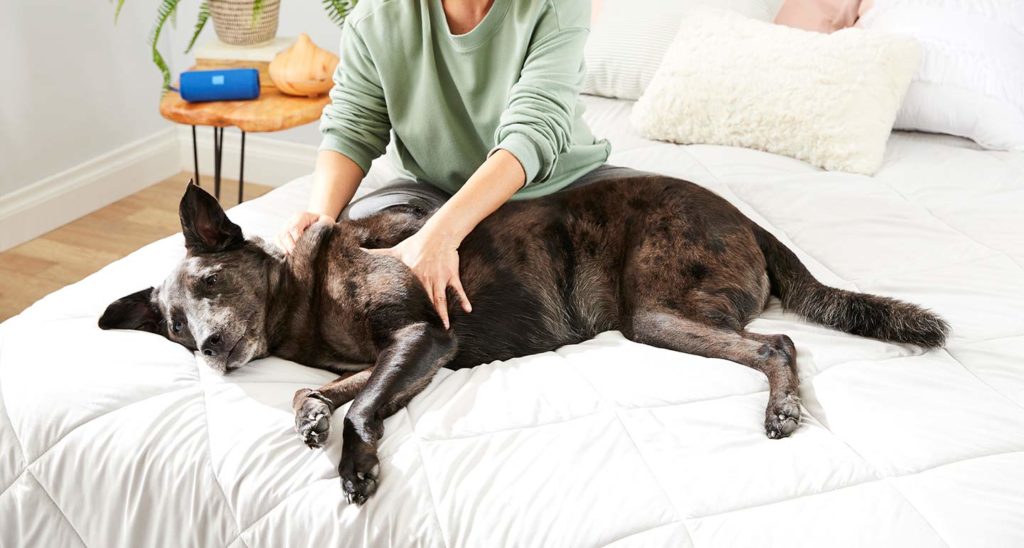Humans aren’t the only species who can benefit from a good massage. This luxury can and should be extended to our furry companions, who can experience great relief by way of dog massage. Massaging your dog doesn’t require a special certificate or extensive knowledge, either; virtually any pet parent can perform effective, yet gentle massage techniques on their fur baby as a part of their regular dog grooming routine. Learn how to give a dog a massage, and you will be ready to give your dog the best treat of all—relaxation and rejuvenation.
The Benefits of Dog Massage
A dog massage doesn’t just feel good—it can also provide a host of health benefits for your pup, both physically and mentally.
According to Sally Morgan, PT, CST, holistic physical therapist for pets and people, dog massages can improve the health of your dog by increasing circulation, relaxing muscle spasms and muscle tension, correcting muscle imbalances, improving posture and gait, and promoting relaxation. “A dog that is in physical balance is likely to be in emotional balance, so massage can provide many layers of benefit for your dog,” Morgan says. “Massage for your dog can improve his connection through his body, so that he is more aware of where his body is in space, [and] more able adjust to shifting environmental factors or emotional stresses.”
Beyond the physical and emotional advantages of performing massage therapy on your dog, this gentle treatment is also a surefire way to strengthen the bond you share with your furry companion. “Massaging your dog helps create a sense of calm and connection between the two of you,” says animal massage therapist Rubi Sullivan, CSAMP. “They can feel your intention when you focus on them, and pay attention to what you’re feeling and how it’s affecting them.” Morgan attributes this state of calm to the idea of heart coherence, which is “a state when your body rhythms come into synchrony with those of your dog, … deepening your connection and bringing a state of calm to both of you,” she says.
The gentle touch and focused attention characteristic of a dog massage also helps pet parents have a more intimate understanding of their pet’s body, allowing them to detect any issues that need to be addressed. “Our furry best friends tell us when they’re hungry or when they are ready to go play ball, but oftentimes we miss the small changes in their body that can potentially lead to more health issues,” says Sullivan.
When to Massage Your Dog
All dogs can benefit from a massage. In fact, Sullivan says the best time to introduce dog massage techniques is when your pup is young, healthy and active. “Young dogs are still developing their immune system, and massage is a great for encouraging its growth and strength,” she says. “This is also a good age to create a hands-on bond with your dog and to teach them how to relax and enjoy life.”
If your dog suffers from certain medical afflictions, a dog massage can be especially beneficial for their health. Dogs with osteoarthritis, those undergoing chemotherapy and/or radiation, or dogs in general postoperative recovery can get relief through this gentle, focused treatment. “Massage can be beneficial for many specific ailments such as arthritis, lameness, muscular injury, sports and overuse injuries, and some systemic diseases, but often medically therapeutic massage is best left in the hands of experts,” says Morgan.
How to Massage Your Dog
Although dog massages designed to treat certain medical ailments are best left to the professionals, Sullivan notes that there are certain techniques that you can try at home:
Effleurage
This dog massage technique is the most commonly used in animal therapy, and is utilized to calm the tissues and warm up the body. “Effleurage is … used to affect the fluid dynamics at a superficial level,” says Sullivan. “It’s a good technique for initiating touch.” Simply place your flat hand over your dog’s skin and move over the muscles using a light pressure.
Steps for how to perform a effleurage dog massage:
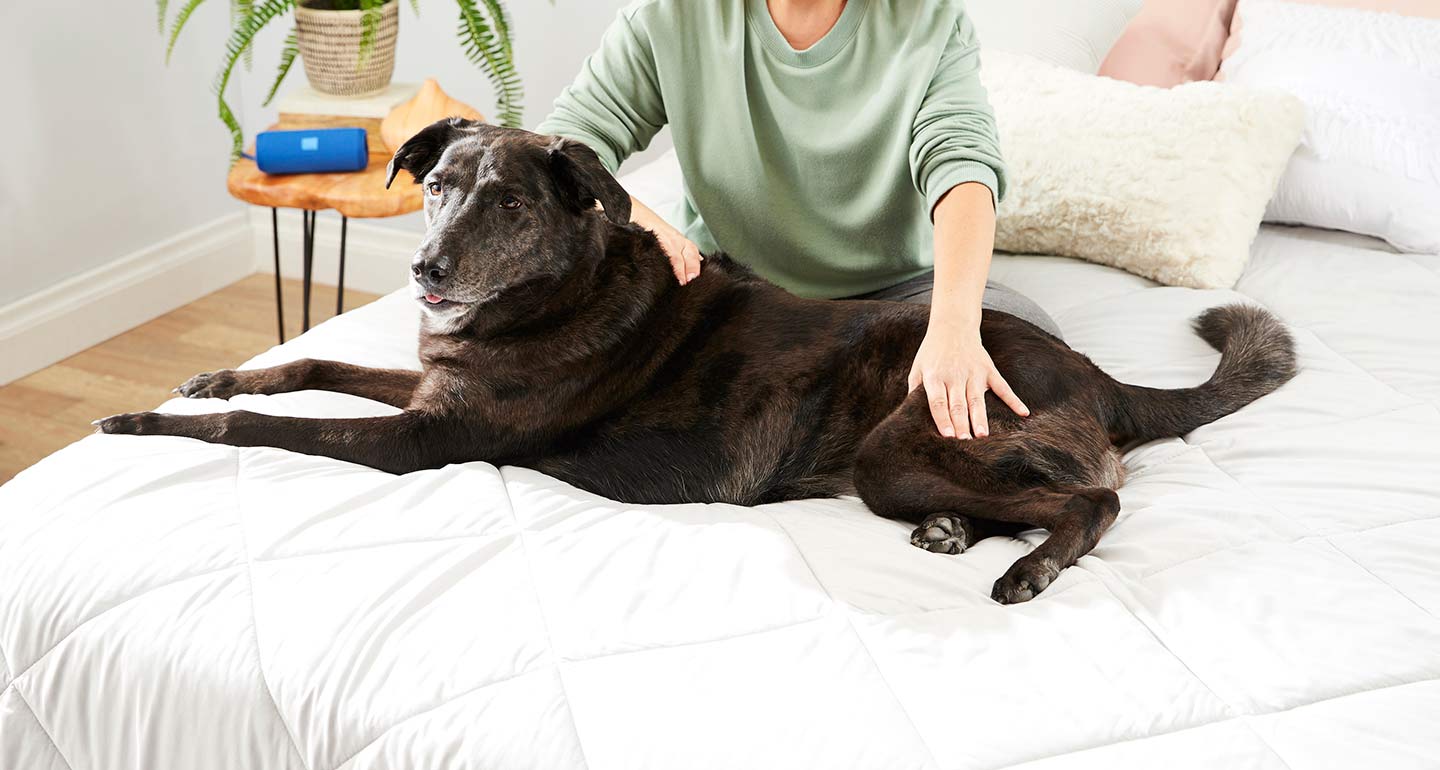
Create a calm atmosphere for your pet.

Place your flat hand over your dog’s skin.
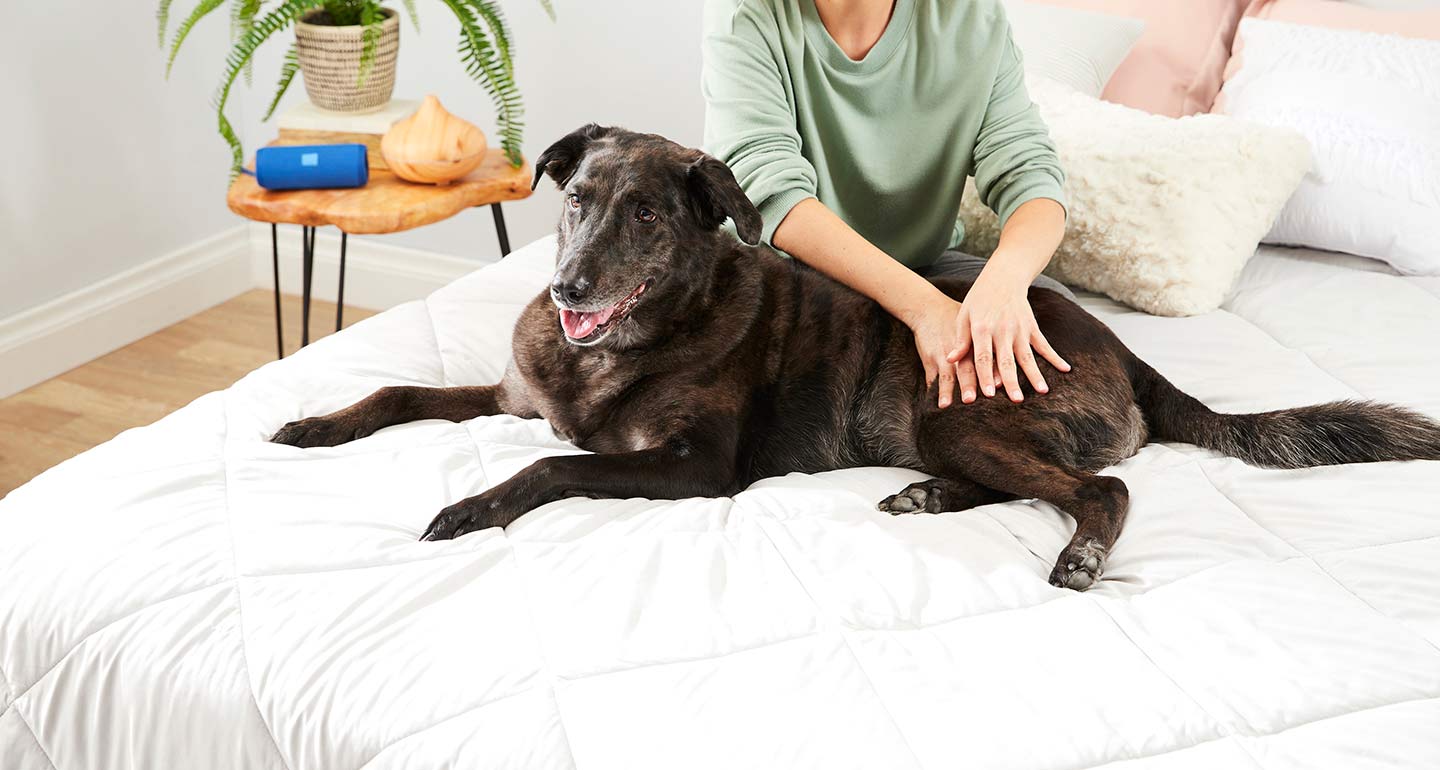
Move your hand over the muscles using light pressure.
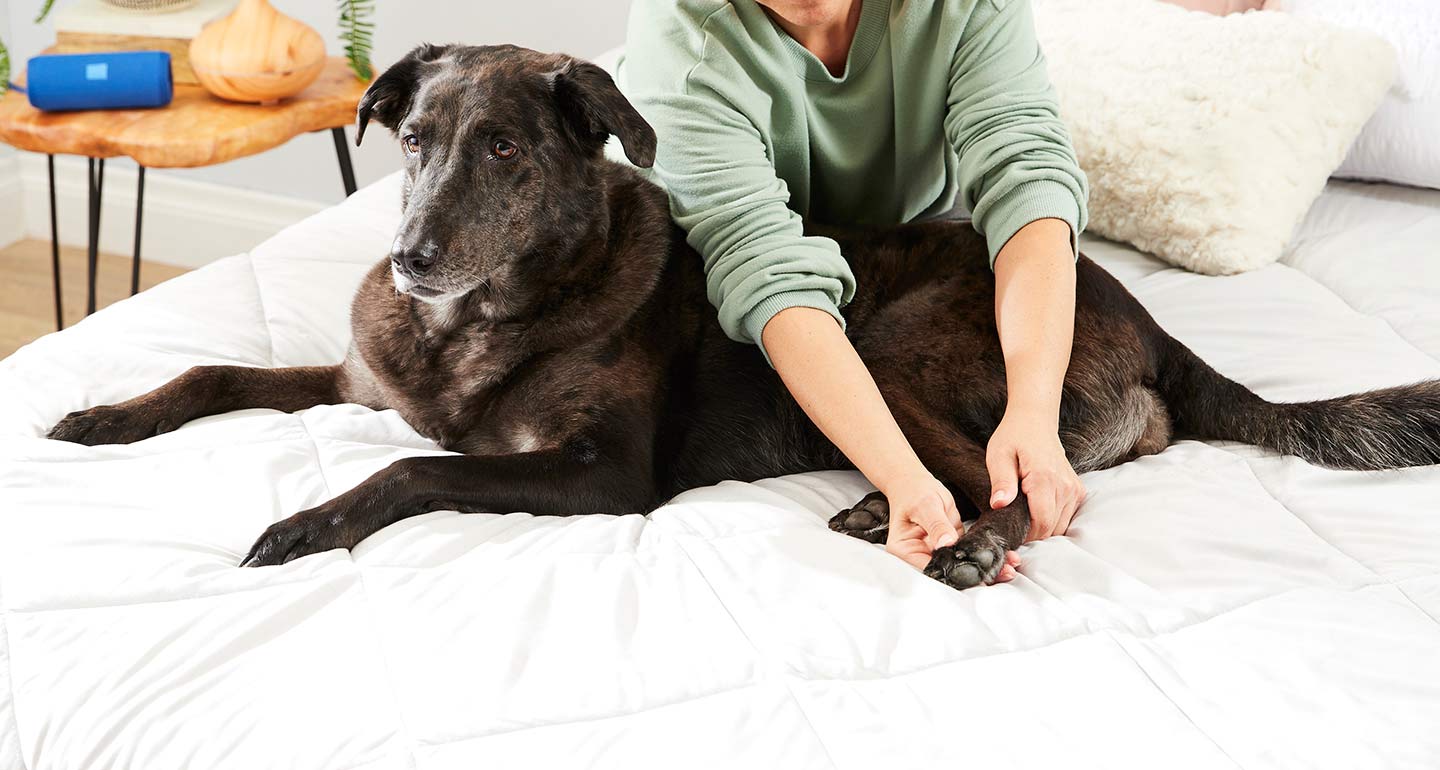
After about two to three minutes, move to another area like your pet’s ears, tail, legs and paws.
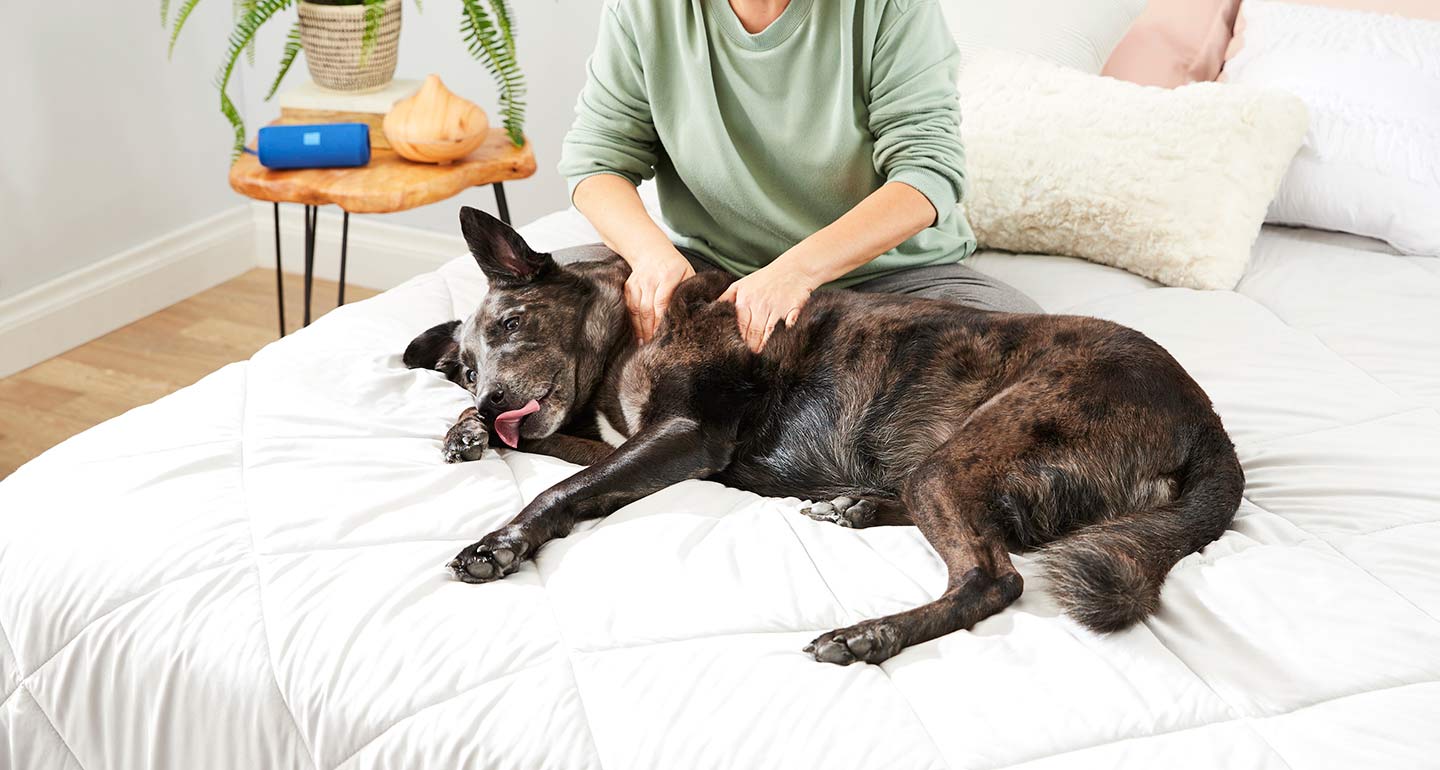
A relaxing dog massage will help calm your pet and help the two of you bond.
Tapping (a form of tapotement)
Tapotement is a gentle, percussive stroke that engages the central nervous system and stimulates atrophied, as well as healthy, muscles, says Sullivan. This technique is best to use when you need to get your dog’s attention, or in combination with other strokes. Tapping involves the drumming of your fingers on a specific area of the body, and you can perform this on your pup by lightly placing your fingers on your dog’s skin and tapping them each individually, like drops of rain. Keep in mind that each dog will react differently to the procedure, as some dogs may find it stimulating, while others find it sedating.
Steps for how to perform a tapotement dog massage:
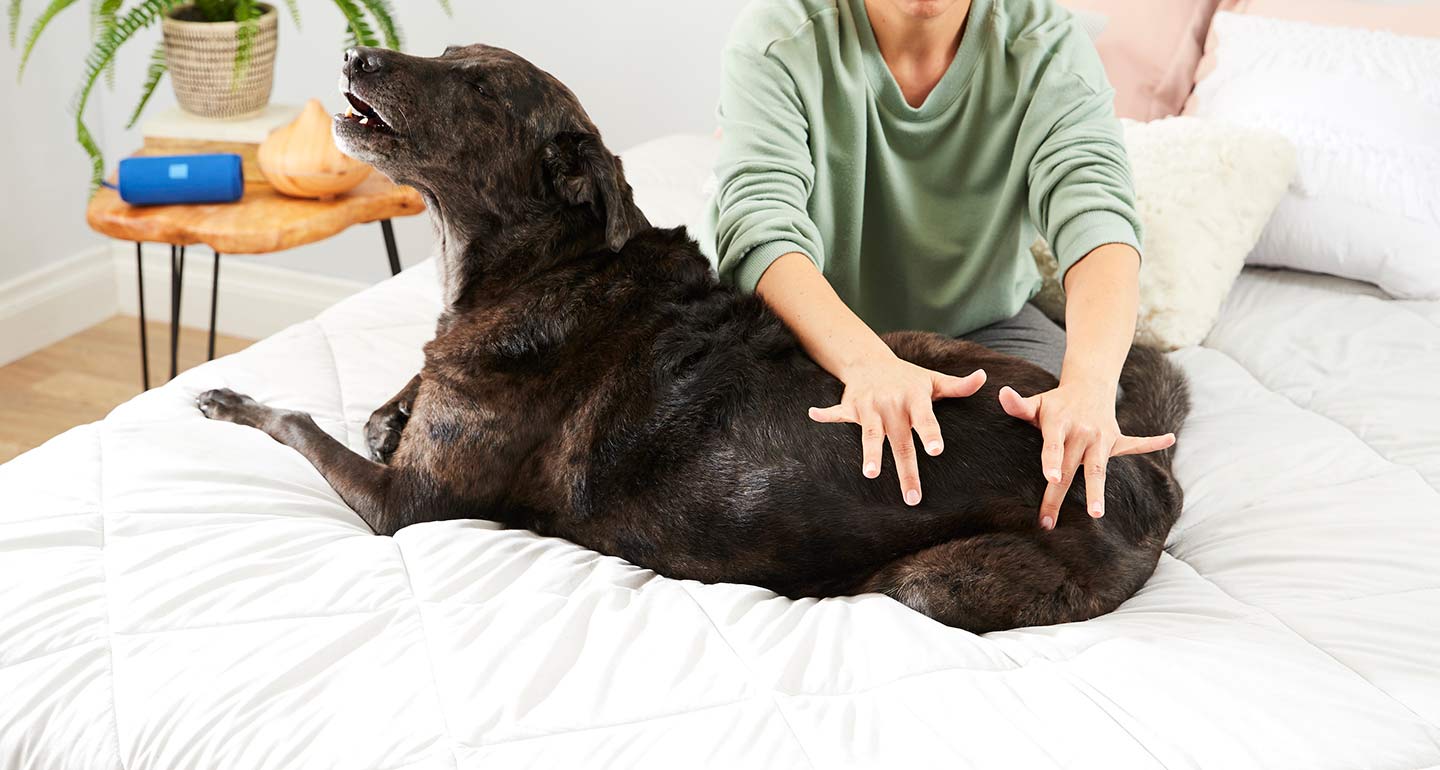
Get your pup’s attention by drumming your fingers on a specific area of your dog’s body.
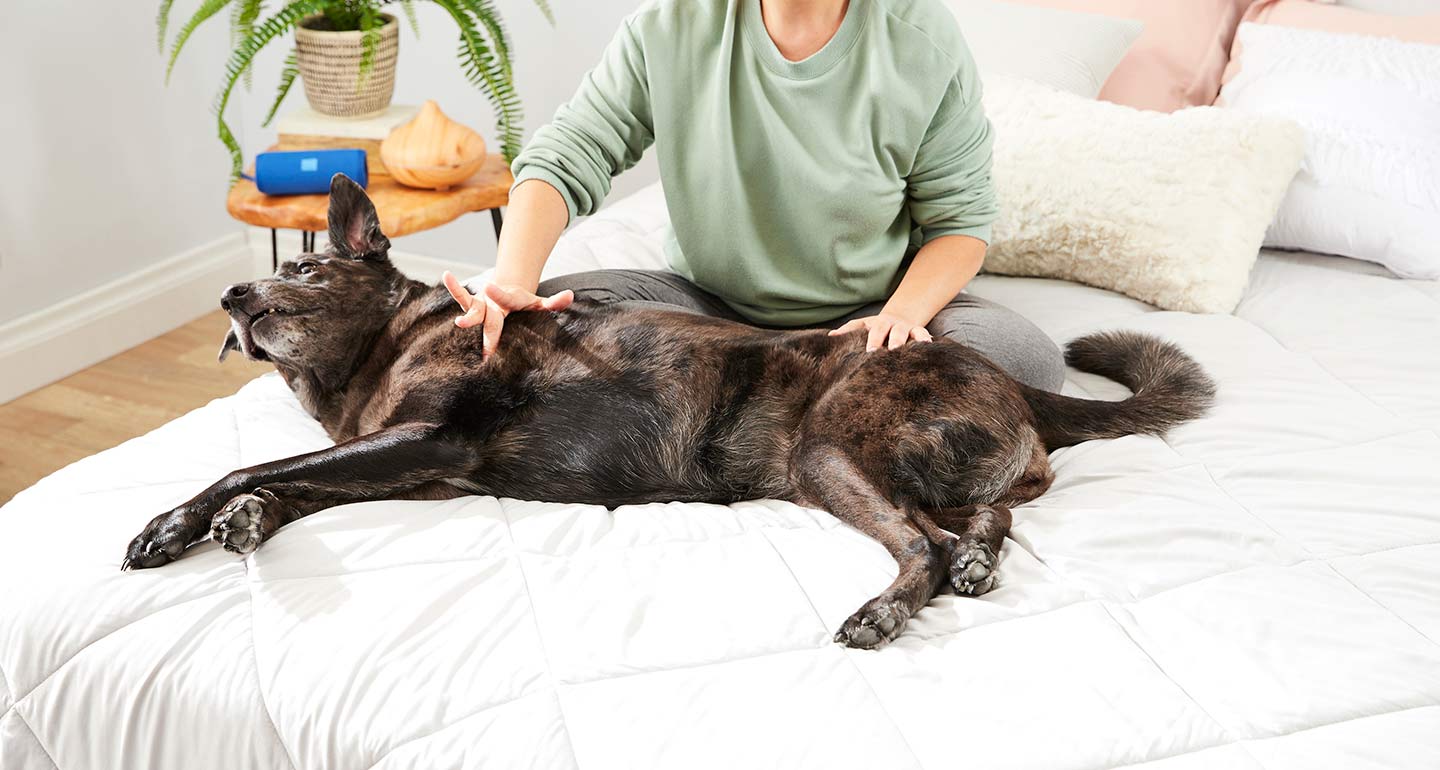
Lightly place your fingers on your dog’s skin.
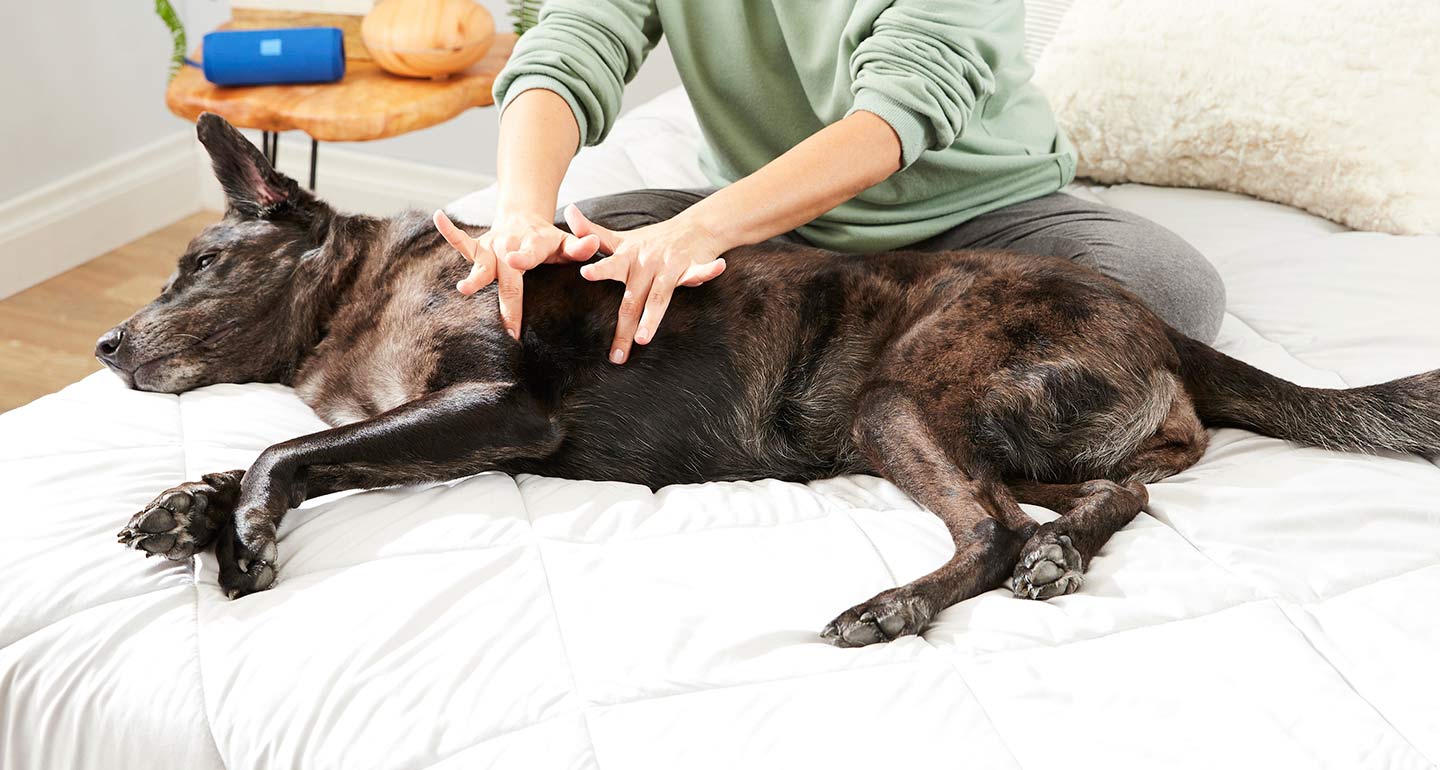
Tap each finger individually.
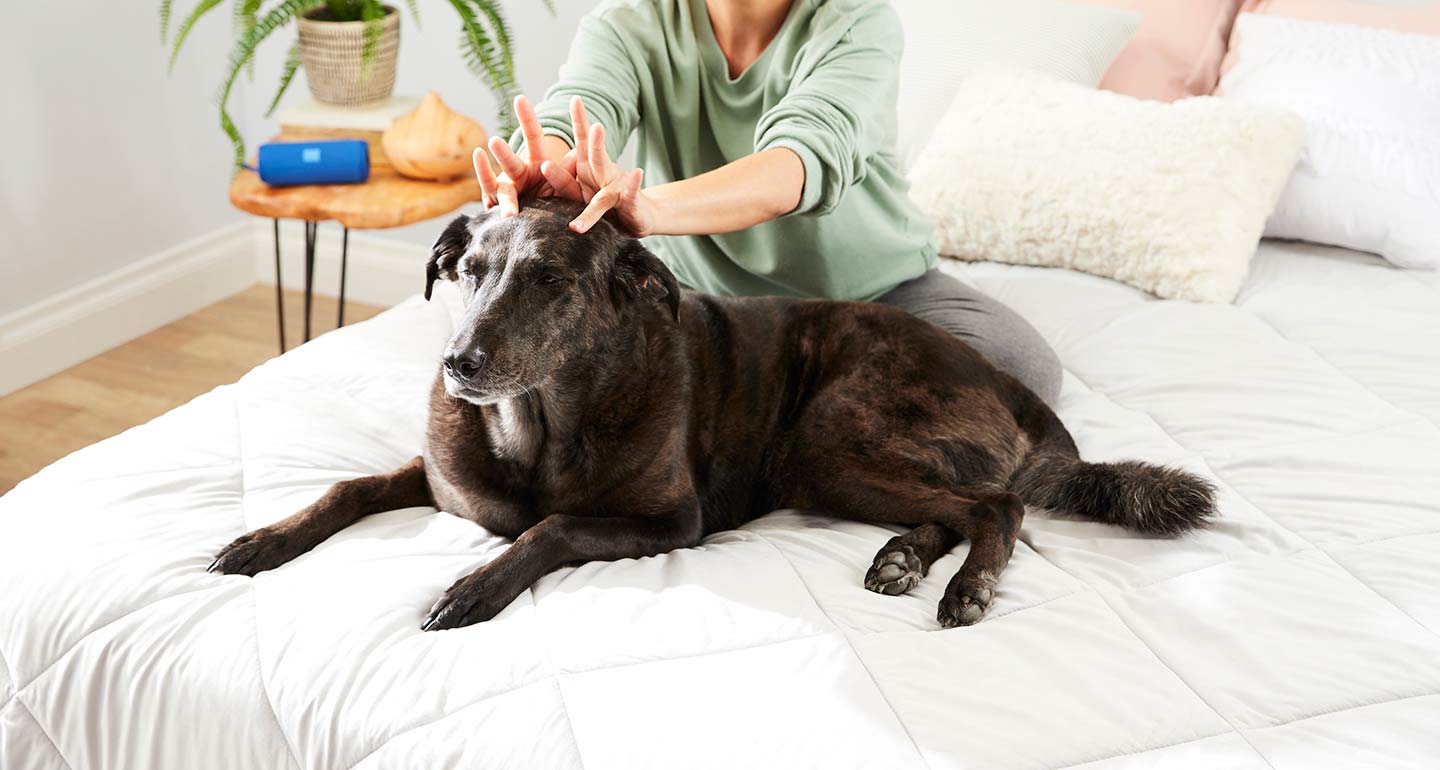
Move to other areas of your pet’s body, like the ears, tail, legs and paws, if he finds it pleasing and seems relaxed.
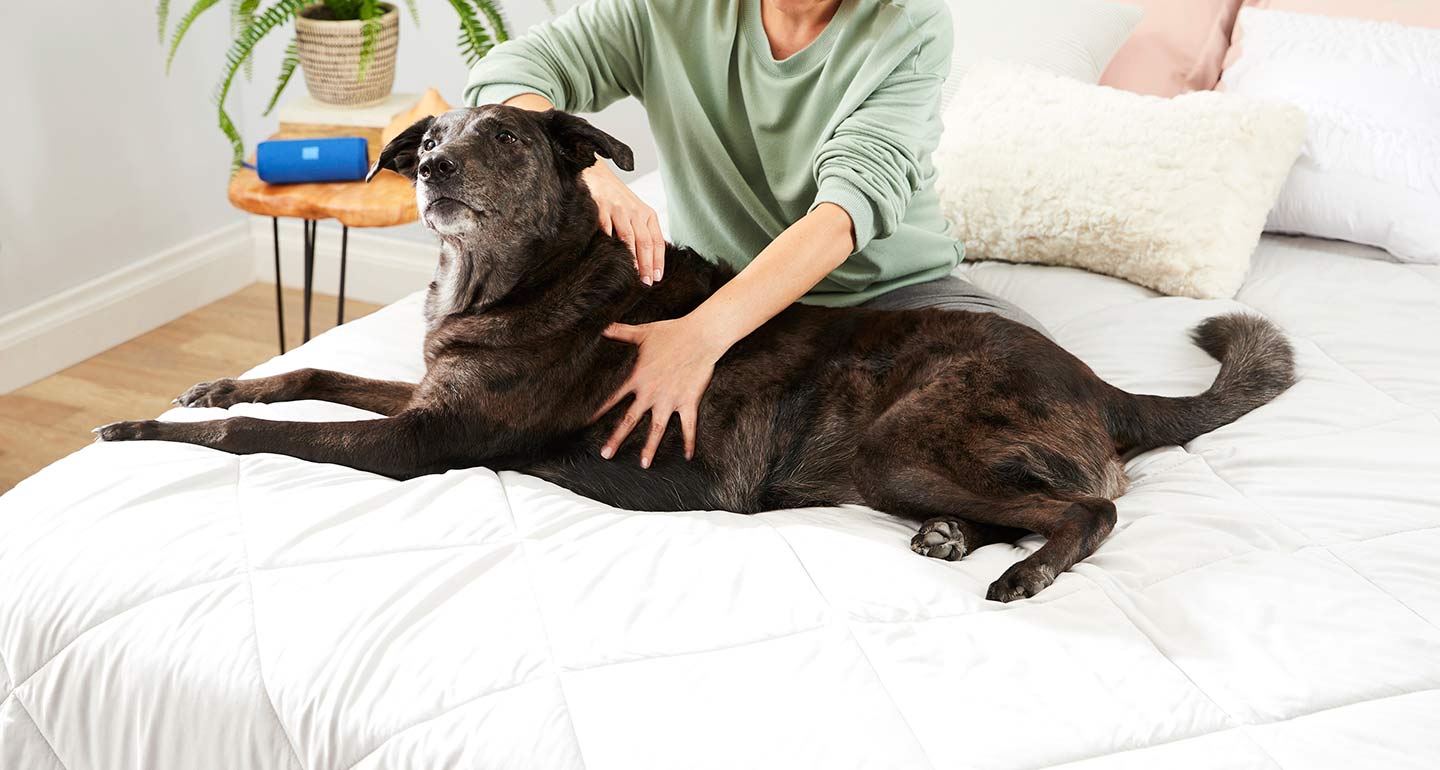
If your pet seems stimulated, instead of relaxed, consider switching to an effleurage dog massage.
Morgan advises that “rubbing an area is not massage, and is annoying to most dogs. Stroking in the direction of the hair growth, all of the way to the dog’s paws is relaxing and beneficial, stimulating lymph and helping decrease the buildup of toxins.”
An easy way to give your dog a massage is with the help of some dog grooming supplies. Mr. Peanut's Hand Gloves grooming mitt has soft, flexible rubber tips that gently massage the skin and promote good circulation, while simultaneously removing dirt and excess hair from the coat. The FURminator Long Hair deShedding Edge is a great way to gently massage your dog’s coat and remove the undercoat and loose hair. And dogs love the feeling of the KONG Dog ZoomGroom dog brush, which removes hair like a magnet while stimulating and massaging the skin. The gentle touch keeps your dog engaged, lowers blood pressure, and reduces stress for a happier and healthier dog.
When stroking your dog, make sure to include the ears, tail, legs and paws. “Many dogs hold emotional tension in their paws, and it is important when doing a massage for your dog that you include gentle work on the pads of the feet and between the pads,” she says.
For more insight on how to massage your dog, you can get in touch with a holistic vet. “She may be able to suggest some acupressure points to work with that would be especially helpful for your dog,” Morgan says.
Read more:
Share:
